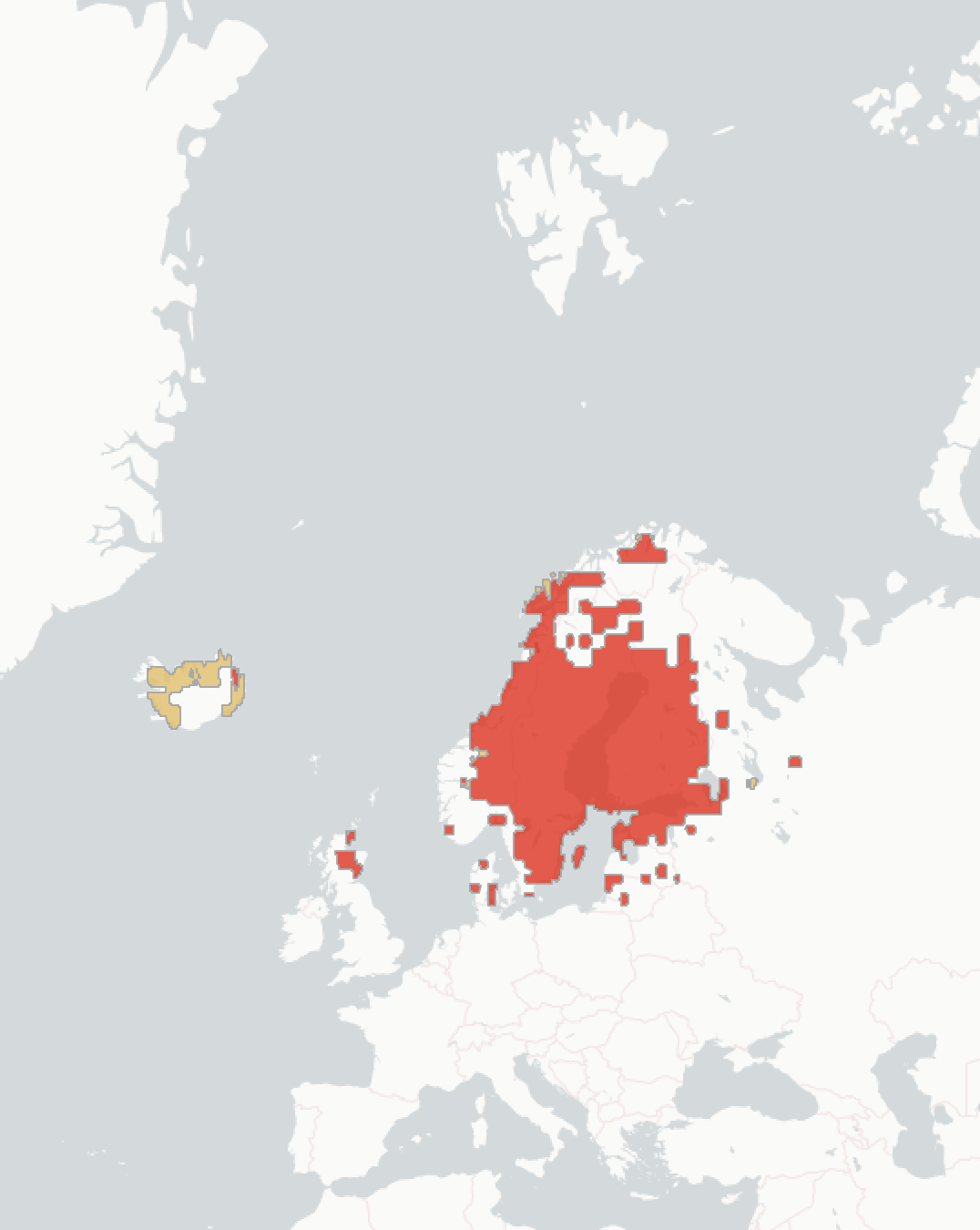Horned Grebe (Podiceps auritus): vulnerability to climate change
Evidence for exposure
Potential changes in breeding habitat suitability:
-
Current breeding area that is likely to become less suitable (92% of current range)
-
Current breeding area that is likely to remain suitable (7%)
-
Current breeding area that is likely to become more suitable (1%)
Current impacts to Horned Grebes attributed to climate change:
-
No impacts have been documented for this species in Europe
Predicted changes in key prey species:
No key prey species are predicted to decline for this species.
Sensitivity
-
The species has a large range, and a large population (though the population in Europe is relatively small), but is declining rapidly across much of its range. The cause is unknown, previous research has found little to no evidence climate change is contributing to decline. However, additional pressure from climate change is likely to exacerbate existing declines.
-
Species is sensitive to disturbance, sites or whole areas can be abandoned if there is heavy human activity. Conservation intervention or monitoring is therefore difficult
-
Horned grebe build either floating nests or nests on low-lying rocks and beaches. Nests are therefore vulnerable to flooding caused by high wind and wave action, it can be a significant source of mortality. Any changes in lake or coastal sea level are likely to have impacts on breeding populations
Adaptive capacity
-
Horned grebes frequently return to the same breeding sites, and show some breeding site fidelity. However, when conditions change several populations have abandoned previous sites. There appears to be significant interchange between populations, and some populations may shift in response to changing climate
-
Species has a varied diet of freshwater and marine species. Change in one or a few species is unlikely to have significant impacts on most populations.
